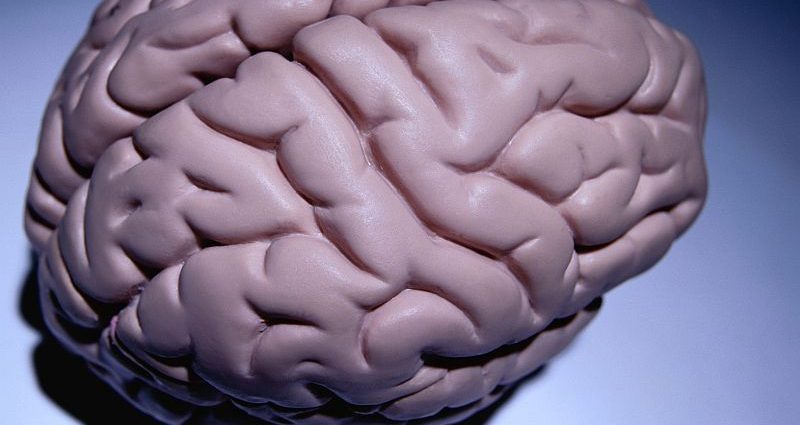THURSDAY, Oct. 12, 2023 (HealthDay News) — After a massive five-year effort, researchers have unveiled an “atlas” that gives an unprecedented look at the intricacies of the human brain.
The atlas, which will be available to researchers everywhere, can be seen as similar to the atlases we all know: a book of maps.
But this one catalogues human brain cells and their striking diversity and complexity. Going forward, the atlas will help other researchers “navigate” the brain, said Bing Ren, a professor at the University of California, San Diego, who was part of the research effort.
The atlas encompasses more than 3,000 types of brain cells, and gives insight into how they vary from one person to another, how they differ from non-human primates’ brain cells, how particular brain cell types are related to specific diseases, and more.
The ultimate goal, Ren and other experts said, is to better understand the workings of the human brain — and what goes wrong in the range of neurological and psychiatric conditions that plague humans, from Alzheimer’s to depression to schizophrenia.
The publication of the brain cell atlas, Ren said, “is just the beginning.”
The work is detailed in a collection of 21 papers being published Oct. 13 in the journals Science, Science Advances and Science Translational Medicine. In all, the project involved hundreds of scientists from different countries, brought together under the U.S. National Institutes of Health’s BRAIN Initiative program.
The ambitious project was possible thanks to new technology that allows scientists to study features and functions of individual cells.
That kind of deep understanding of brain cells could eventually lead to new, highly targeted treatments for neuropsychiatric conditions — including ones no one has thought of yet, said Dr. Panos Roussos, a professor at Mount Sinai’s Icahn School of Medicine in New York City, who worked on the project.
Many current medications for those diseases target neurotransmitters, chemicals that help brain cells communicate.
They help many people, but also “leave many others behind,” said Dr. Jeffrey Borenstein, president of the nonprofit Brain and Behavior Research Foundation in New York City.
Borenstein, who was not involved in the atlas project, called it “very important work.”
“It lays the foundation for scientists to better understand how the brain works, in both health and states of disease,” he said. “I think this offers tremendous hope for people who are living with psychiatric illnesses.”
Human brain cells, it’s fair to say, are diverse and complex. Each cell in the brain has the same DNA sequence, but different cell types use different genes, and in different amounts.
To give it an analogy, Ren said brain cells can be regarded as people living in different parts of the world: Depending on where they end up residing in the brain, they speak different languages.
A broad goal, Ren and Roussos said, is to better understand how those different brain cell types interact with one another, in health and in sickness, and to identify the cell types that are relevant to any given disease.
In their study, Ren’s team analyzed three human brains, looking in detail at more than 1 million cells in 42 brain regions. They identified 107 different brain cell subtypes, then were able to correlate certain aspects of cells’ molecular biology to specific diseases — including schizophrenia, bipolar disorder and Alzheimer’s disease.
Roussos and his colleagues, meanwhile, studied brain tissue from across the life span, from fetal development to adulthood. That’s critical, Roussos said, since different neuropsychiatric conditions have different ages of onset.
They, too, were able to map certain brain cell types to specific diseases. That included associations that were previously unknown — including linking Tourette syndrome to cells called oligodendrocytes and obsessive-compulsive disorder to astrocytes.
“If you know which cell type is related to a disease, then you can make hypotheses on causes,” Ren said.
He noted that his work, like some studies before it, point to the importance of cells called microglia in Alzheimer’s. Microglia are resident immune cells in the brain, and Ren and other researchers suspect that an abnormal set of “super-activated” microglia play a central role in causing Alzheimer’s, by attacking the brain’s neurons.
“So is there some way we can tone down that over-activation?” Ren said.
Among the project’s other findings:
- Researchers at the Allen Institute for Brain Science, in Washington, D.C., and other centers studied which genes are “turned on” in individual cells in the human brain — allowing them to categorize more than 3,000 different kinds of brain cells.
- Individuals vary widely in their proportions of different kinds of brain cells, and in which genes are active within those cells.
- Humans share the same basic brain cell type “architecture” with our closest primate relatives, chimpanzees and gorillas. Where we differ is in which genes those cells “use.” Specifically, those differences are seen in genes that allow brain cells to connect and form circuits.
In a statement, Dr. John Ngai, director of the NIH BRAIN Initiative, said the program’s scientific collaborations are “propelling the field forward at an exponential pace.”
“The progress, and possibilities, have been simply breathtaking,” he said.
More information
The U.S. National Institutes of Health has a primer on brain basics.
SOURCES: Bing Ren, PhD, professor, cellular and molecular medicine, University of California, San Diego; Panos Roussos, MD, PhD, professor, psychiatry, and genetics and genomic sciences, director, Center for Disease Neurogenomics, Icahn School of Medicine at Mount Sinai, New York City; Jeffrey Borenstein, MD, president and CEO, Brain and Behavior Research Foundation, New York City; Science Advances and Science, Oct. 13, 2023
Copyright © 2024 HealthDay. All rights reserved.

